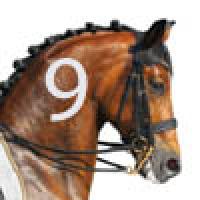
Plus Advent Calendar Door #9: Walk, trot, gallop

A dressage horse and rider performing the extended trot. Image: Chefsna.
Horses, like all animals, have a number of different gaits. But how can they perform all these complicated leg movements without having to stop and think? And why do they switch to a new gait when they want to go faster?
The branch of science that studies animal movements is called gait analysis. A gait is a pattern of leg movements, such as the walk, trot, gallop, and canter. Gait analysis applies to all animals with legs, including insects, with six; spiders, with eight; and humans, with two. It seeks to understand the general principles of legged locomotion in nature. Those principles also apply to creatures that use wings, or fins, or wriggle—like snakes. Even snails have their own characteristic gaits.
Mathematics is used in gait analysis in several different ways. At the simplest level, it describes the patterns. This description provides clues about the networks of nerve cells that control the gaits, known as central pattern generators. In many animals it is virtually impossible to observe these networks directly, but the timing patterns provide clues that suggest what symmetries the central pattern generator should have.
To find out more about what the maths of gait analysis tells us, read Ian Stewart's Plus article Walk, trot, gallop.
Return to the Plus advent calendar 2019.